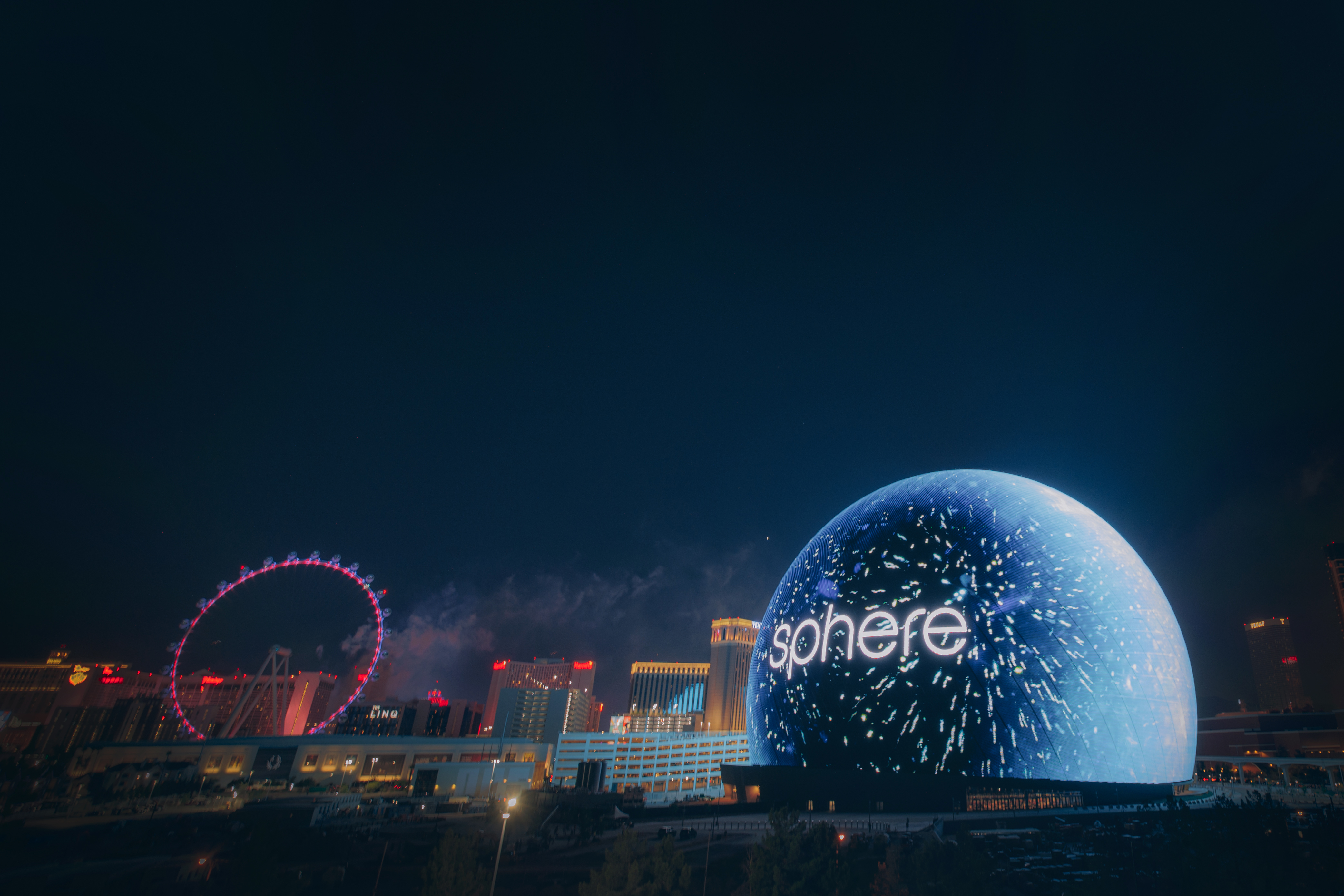Behind the Scenes of the Company Helping Power the Video Systems at Sphere
Learn how 7thSense’s 20 years of expertise helped develop the largest video system deployment in the world at Sphere in Las Vegas.

Sponsored Content
Systems Contractor News sat down with 7thSense team members Rich Brown, chief technology officer, John Higgins, product development director, and Alex Hughes, principal software architect, to discuss the company's 20 years in video systems and how it all led to the largest video system deployment in the world, at Sphere in Las Vegas.
Systems Contractor News: Looking back on its 20-year history, how has 7thSense stayed at the forefront of innovation in video systems?

John Higgins: Simply put, solving complex problems motivates us. We have a long history of pushing the boundaries in video systems, from the company's foundation in world-leading planetaria through ground-breaking theme park attractions and now into the largest video system in the world. We have great relationships with our technology partners. Quite often, they are also introducing the latest innovations into the market, so we are keen to work with a partner on the same journey.

Alex Hughes: The power and capabilities of available hardware have expanded massively over the last twenty years, but those advances have sometimes come with a corresponding increase in complexity. 7thSense has invested heavily in building a unified, integrated product range that can scale from small to extremely large installations.
Some individual technologies, such as SMPTE ST 2110 (ST 2110) video over IP, have relied on large-scale development efforts by our technology partners. We have contributed the experience gleaned from our own development and deployment efforts, both current and previous.

Rich Brown: 7thSense has always focused on the performance and quality of the visual result. We have had a longstanding relationship with a GPU manufacturer that has helped us stay on top of advancements in graphics processing. We were happy to have them as a partner we could lean on for their advanced networking capabilities as well. We used ST 2110 technologies for our Actor and Delta Media Servers, and Conjurer Generative Engines. More broadly, as a company, we are constantly developing and adapting our product offerings to suit emerging industry requirements and bring new techniques and capabilities to our customers.
A daily selection of the top stories for AV integrators, resellers and consultants. Sign up below.
SCN: 7thSense was recently involved in Sphere in Las Vegas, providing the media server and pixel processor solutions that power the content on the internal and external LED displays. What technologies and partnerships stood out for you on this project?
JH: The whole video system is a ground-up redesign for 7thSense. This has leveraged new technology in every aspect of video generation and delivery. The standout effort was the development of a NAS (networked attached storage) streaming system. Partners who specialize in high-speed NAS systems and high-bandwidth data transfer came through with a rock-solid solution, which works perfectly when coupled with the 7thSense Actor media server. The fact that this pairing delivers frame after frame of content without missing a beat is hidden from most visitors to the venue. Still, for me, it's amazing, and coupled with ST 2110 video delivery, it really sets the bar for other large-scale venues.
AH: The standout technology has to be the use of ST 2110 video over IP to transport massive amounts of very high resolution, high bit-depth, uncompressed imagery from storage to screen. Being able to deliver image data via a packet-switched network (PSN) represents a step change in capability and flexibility.
Supplying the necessary data rates has also required developing and deploying very sophisticated disk storage systems, not just at the hardware level but also for the corresponding software to manage content.
Our Juggler pixel processor has been instrumental in providing the flexibility and capability to tie together a very complex network of systems.
Finally, the use of precision time protocol (PTP) has been vital to allowing a highly parallel distributed system to function as a single unified entity.

RB: From the outset of the Sphere project, we needed to really push the upper edge of what is possible with ST 2110, streaming very high bit-depth 4K media from our Actor Media Servers to our Juggler pixel processors, and when we set out to do it, there weren't any tools on the market to test that high of a spec. So we partnered with a manufacturer of video signal test equipment to expand the capabilities of its ST 2110 testing and analysis tools to encompass the higher requirement. These test tools have proven to be incredibly useful not only for product development but in project deployment as well.
When it comes to Juggler pixel processors, the power of the product is rooted in the creative use of FPGA technology. Sphere uses a second generation of Juggler hardware, building upon what worked well with the first Jugglers and essentially doubling processing capacity with a newer generation of FPGA hardware.
SCN: How have the technology advancements made achieving large-scale video projects more achievable and affordable?
AH: Video over IP can be treated similarly to other data types, allowing for a more consistent, efficient, and resilient distribution system.
JH: Having a totally IP-based video system enables many more possibilities when it comes to system reliability. The shift from video cables and local storage hard drives over to ST 2110 video and storage on a centralized NAS makes hardware redundancy significantly more capable. In addition, bringing external IP video sources into the system is hugely simplified over previous technologies, and with a venue like Sphere, flexibility and reliability are essential.
RB: Technology advancements often allow us to reduce the overall amount of equipment needed to build a system. Our GPU-based servers all use the latest high-performance components. With more powerful GPUs, it is possible to output more channels of video from a single server, reducing overall system complexity. With Juggler, doubling the FPGA capability effectively halves the total quantity of pixel processors needed to perform that task.
For Sphere, we developed an entirely new media distribution and programming workflow to meet the requirements and simplify the system's use. This was critical for a system of this size and complexity.
Check out more awe-inspiring 7thSense installations here.

Sponsored Content: 7thSense is a privately owned creative software and technology company with offices in Upper Beeding (Sussex) and London in the UK, Orlando, Florida, and Burbank, California. Established in 2004, we are technology innovators who specialize in pixel generation, processing, and management by providing a toolkit of advanced products that enable storytellers worldwide to fulfill their vision. As a team, our dedication to performance and innovation allows us to consistently push the limits of storytelling.
